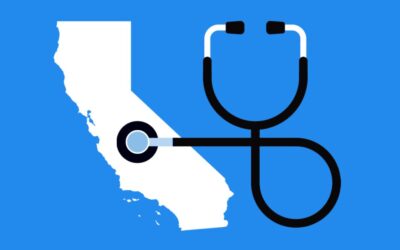
What You Need to Know About Covered California Essential Health Benefits
Welcome to our comprehensive guide on Essential Health Benefits, a topic that every health insurance enrollee should be familiar with, but often isn’t. Essential Health Benefits, commonly referred to as EHBs, are the core set of healthcare services that your insurance plan is required to cover under the Affordable Care Act (ACA). These benefits aim to ensure that everyone has access to a broad range of healthcare services, from maternity care to mental health treatment.
So why are Essential Health Benefits especially important when it comes to Covered California? Covered California is not just any insurance marketplace; it’s the official health insurance marketplace for the Golden State, where you can shop for, compare, and buy insurance plans that are compliant with the ACA. This means that any plan you purchase through Covered California is guaranteed to provide these Essential Health Benefits. Understanding what these benefits are can help you make an informed choice when selecting a plan that best meets your healthcare needs and budget.
Whether you’re new to Covered California or are considering switching plans during the upcoming enrollment period, this guide will take you through everything you need to know about Essential Health Benefits. Read on to gain a comprehensive understanding of what these benefits include, why they matter, and how they can impact your healthcare experience.
What Are Essential Health Benefits?
Essential Health Benefits, often abbreviated as EHBs, are a set of ten categories of healthcare services that health insurance plans are required to cover under the Affordable Care Act (ACA). Instituted as part of healthcare reform in the United States, the concept of Essential Health Benefits aims to provide a standardized, comprehensive range of services that should be available to all Americans, regardless of where they live or what type of insurance they have.
A Bit of History
Prior to the Affordable Care Act, the health insurance landscape in America was a bit like the Wild West. There were few federal standards governing what insurance plans should or should not cover. This lack of regulation led to many individuals and families finding themselves underinsured or entirely uninsured for essential services, such as preventive screenings, maternity care, or mental health treatment.
The introduction of the ACA in 2010 brought a significant shift in this landscape. One of its fundamental tenets was the requirement that all health insurance plans offered through federal and state marketplaces, including Covered California, must include a standard set of benefits—hence, the term “Essential Health Benefits.”
The Standardization Goal
The idea behind EHBs was not just to guarantee coverage but to standardize it. Before EHBs, comparing health insurance plans was often like comparing apples to oranges; the features and benefits varied so widely that making an informed decision was complicated, to say the least. The ACA’s requirement for Essential Health Benefits brought a level of uniformity to the market, making it easier for consumers to compare plans and understand what they were actually getting.
In the context of Covered California, the state’s official health insurance marketplace, Essential Health Benefits take on additional significance. Since all plans offered through Covered California must include these ten categories of services, you can shop with the assurance that certain critical types of care are covered. This standardization allows you to focus on other variables, like costs and network of providers, when choosing a plan that’s right for you.

Why Essential Health Benefits Matter
You may be asking yourself, “Why should I care about Essential Health Benefits?” The answer is simple but profound: EHBs serve as a safety net for your health. Understanding the critical role they play can dramatically impact not only your healthcare experience but also your financial well-being.
Comprehensive Coverage
One of the most straightforward advantages of EHBs is the comprehensive range of healthcare services they cover. From preventive screenings to hospital stays, EHBs ensure that you have access to a wide variety of essential services, significantly reducing the chance that you’ll encounter an unexpected gap in coverage.
Financial Protection
Before the establishment of EHBs, many people faced financial ruin due to inadequate health insurance coverage. Imagine undergoing a major surgical procedure, only to find out that your insurance won’t cover essential post-operative rehabilitation. With EHBs in place, such scenarios are largely a thing of the past. The requirements for EHBs serve as a financial safety net, ensuring that you aren’t left holding a bill for thousands of dollars for essential services.
Leveling the Playing Field
The standardization brought by EHBs levels the playing field when shopping for health insurance. You no longer have to scrutinize each plan’s details to ensure it covers fundamental services. This is especially significant in the context of Covered California, where all plans must include EHBs. This mandatory inclusion allows you to focus on other factors such as cost, quality of care, and provider networks, simplifying the often daunting task of choosing a plan.
Ensuring Quality of Life
Healthcare is not just about treating illnesses; it’s about maintaining a good quality of life. EHBs include preventive services, mental health care, and wellness checks, which are integral to living a full, healthy life. Preventive services can catch diseases before they become advanced, mental health care can support emotional and psychological well-being, and regular wellness checks can monitor overall health, contributing to a better quality of life.
Importance in Covered California
For California residents, the significance of EHBs is amplified when purchasing plans through Covered California. Knowing that every plan meets federal standards for essential services allows you to shop with confidence. Plus, Covered California often goes above and beyond federal requirements, offering additional consumer protections and benefits.

The Ten Categories of Essential Health Benefits
Essential Health Benefits encompass a broad range of services, broken down into ten specific categories. These categories are designed to provide a well-rounded healthcare experience, ensuring you’re covered for various types of medical needs. Below, we delve into each category to give you a clearer understanding of what they include:
Outpatient Care
Also known as “ambulatory patient services,” this category covers healthcare visits that don’t require hospital admission. Whether it’s a regular check-up, minor surgeries, or ongoing treatments like dialysis, outpatient care is a cornerstone of day-to-day healthcare.
Emergency Services
When life-threatening emergencies occur, this benefit ensures that you can get immediate treatment. Coverage includes services in the emergency room, and it’s required to be offered without any mandatory prior approval.
Hospitalization
Sometimes illnesses or injuries are severe enough to require hospital admission. This category covers your treatment in a hospital, including surgeries, overnight stays, and the associated nursing care.
Maternity and Newborn Care
From prenatal to postnatal care, this category ensures that both mother and newborn receive the necessary healthcare services. This includes doctor visits, delivery, newborn care, and breastfeeding support.
Mental Health and Substance Use Disorder Services
Mental health is as critical as physical health, and this category ensures you’re covered for psychological and psychiatric treatments. This includes behavioral therapy, substance use disorder treatment, and ongoing mental health services.
Prescription Drugs
Medications can be costly, but they are often vital for treating or managing conditions. This category covers your prescribed medications, often based on a formulary or a list of approved medications.
Rehabilitative Services and Devices
After serious injuries, surgeries, or illnesses, rehabilitative services like physical therapy, occupational therapy, and speech-language pathology are essential for recovery. This category also includes devices like wheelchairs and walkers that aid in the process.
Laboratory Services
Diagnostic tests are often crucial for identifying a condition and deciding on a treatment course. This category covers expenses related to tests like blood work, biopsies, and certain screenings.
Preventive and Wellness Services
Prevention is better than cure. This category covers preventive services like immunizations, screenings, and regular check-ups aimed at preventing diseases, or detecting them early enough for effective treatment.
Pediatric Services
Children have unique healthcare needs, and this category ensures they’re met. This includes routine check-ups, immunizations, and dental and vision care for individuals under 18.
Each of these categories plays an essential role in providing comprehensive healthcare coverage. Within the context of Covered California, these benefits serve as a standard measure of care that you can expect from any plan you choose, making it easier to focus on other plan features that are most important to you.
How Essential Health Benefits Are Covered in California
California is a state known for its progressive policies and consumer protections, and healthcare is no exception. When it comes to Essential Health Benefits (EHBs), California goes above and beyond federal requirements to provide residents with comprehensive and accessible healthcare coverage. Let’s explore some of the key aspects that make California unique in this context:
Expanded Mental Health Coverage
While federal law requires plans to offer mental health and substance use disorder services, California has taken additional steps. The state requires that plans cover all medically necessary behavioral health treatments, including services for more mild mental health conditions, not just the severe disorders mentioned in the federal guidelines.
Acupuncture and Chiropractic Care
California law also recognizes certain alternative therapies as essential. As a result, some Covered California plans include coverage for acupuncture and chiropractic care, broadening the scope of services accessible to enrollees.
Pediatric Dental and Vision
Federal law considers pediatric services as an Essential Health Benefit but leaves the specifics up to the states. California mandates that all health plans offered through Covered California include pediatric dental and vision coverage, ensuring comprehensive care for the youngest members of your family.
Reproductive Health
In light of ongoing debates over reproductive healthcare at the national level, California has cemented its commitment to accessible reproductive care. Covered California plans are required to provide comprehensive reproductive health services, including contraception and maternity care, without any extra cost-sharing or copayments.
Preventive Services Plus
While preventive services are a federal requirement, California adds its own list of state-recommended preventive services that go beyond federal guidelines. This could include additional screenings or immunizations based on the state’s public health goals.
Covered California’s Role
Covered California acts as the gatekeeper for health insurance plans in the state, ensuring that they meet both federal and state requirements for Essential Health Benefits. When you shop for a plan through Covered California, you can rest assured that the plan will not only meet the federal EHB standards but often exceed them due to state-specific regulations.
By understanding these California-specific provisions, you’re better equipped to choose a plan that aligns with your healthcare needs and values. Covered California makes this process easier by offering plans that adhere to these high standards of coverage and consumer protection.

Exceptions and Exclusions: What Might Not Be Covered
When we talk about Essential Health Benefits (EHBs), it’s easy to assume that all necessary medical services are included. However, it’s crucial to understand that there are some exceptions and exclusions to be aware of. Not everything that you might consider “essential” will fall under the mandated coverage criteria. Here’s a look at some types of care or treatment that may not be covered:
Cosmetic Procedures
Any surgical or non-surgical procedure aimed primarily at improving appearance rather than function or health is generally not covered. For example, while surgery for a broken nose due to an accident may be covered, a rhinoplasty for purely cosmetic reasons typically won’t be.
Elective Surgeries
Surgeries or procedures that are not medically necessary and are undertaken by choice are often not included under EHBs. For example, elective surgeries like bariatric surgery for weight loss may not be covered unless deemed medically necessary.
Alternative Therapies
While some Covered California plans may offer coverage for alternative therapies like acupuncture or chiropractic care, many complementary and alternative therapies—such as homeopathy, naturopathy, or holistic treatments—are not universally covered.
Fertility Treatments
Procedures like in vitro fertilization (IVF) and other fertility treatments often do not fall under the scope of Essential Health Benefits. Coverage for fertility treatments varies widely between plans and states.
Long-Term Care
Services such as custodial care, which includes assistance with activities of daily living like bathing or dressing, are not included under Essential Health Benefits. Long-term care is usually covered under separate policies.
Over-the-Counter Medications
Even though prescription drugs are an Essential Health Benefit, over-the-counter medications are generally not covered, even if recommended by a healthcare provider.
Travel Vaccines
While many preventive and wellness services, including immunizations, are covered, vaccines needed exclusively for travel purposes are generally not included.
Brand-Name Drugs When Generics Are Available
Prescription drug coverage often comes with the caveat that the insurance company will only cover the cost of the generic version if it is available.
It’s essential to read your plan’s documentation carefully to understand what is and isn’t covered. Being aware of these exceptions and exclusions can help you make more informed healthcare decisions and avoid unexpected costs.
The Importance of Understanding Essential Health Benefits
Selecting a health insurance plan is a pivotal decision that can greatly impact your quality of life and financial well-being. Understanding Essential Health Benefits (EHBs) is crucial in this process because these are the core services that every qualified plan must offer. However, the way these benefits are provided, the associated costs, and even some additional perks can vary from plan to plan.
Choosing a plan through Covered California comes with the added assurance that all offered plans meet, and often exceed, both federal and state requirements for EHBs. This not only provides a standardized baseline for comparison but also often includes extra protections and services unique to California, giving residents of the Golden State an added layer of security and comprehensiveness.
In summary, as you navigate the often complex landscape of health insurance, focusing on EHBs can serve as a valuable guidepost. This focus will allow you to better match a plan’s offerings to your specific healthcare needs, giving you peace of mind that you and your family are adequately covered. Your health is invaluable; make sure your health insurance plan treats it that way.














































